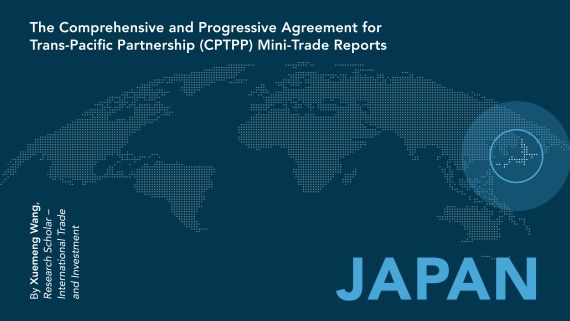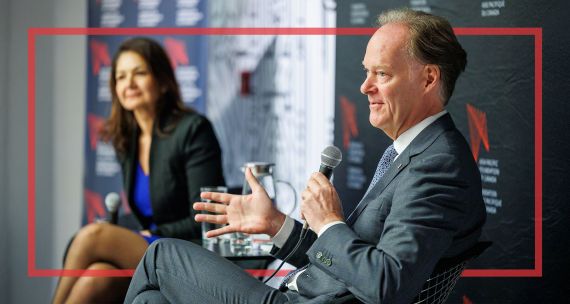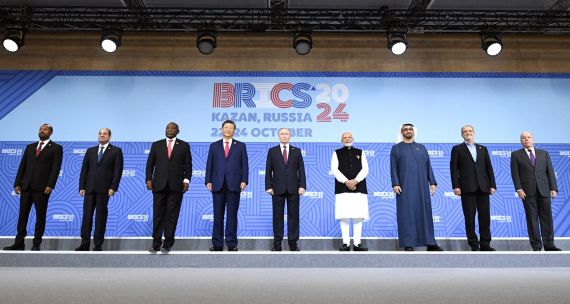Canada’s engagement in Asia dates back to Confederation. Reaching Asia was one of the notable reasons we built the Canadian Pacific Railway. We didn’t use these words at the time but our “geopolitical” partners—those who helped set the parameters of our relations—included Britain, the United States, and Commonwealth countries, notably India and Australia.
We should now add Japan and its ambitious prime minister to that list.
Since the Second World War, Japan’s geopolitical visibility would rarely qualify it as a partner. The post-war focus has been on rebuilding its economy; keeping its defence budget to one per cent of its GDP; relying on a United States-Japan treaty for its security, and a single-party political system that has had turn-style successions of prime ministers.
But these legacies may have lost some of their momentum. Shinzo Abe, prime minister since 2012, does not believe that the tectonic shifts in the distribution of power in today’s Asia allows for a passive Japan. It’s not just a matter of the spectacular rise of China, but also the lack of clarity of the U.S. response, as uncertain under Obama as it is now with Donald Trump; the Association of Southeast Asian Nations’ China-U.S. balancing act; India’s slow but steady rise as a regional political and economic power; and the urgency of maintaining the liberal trading systems and open seas that have underpinned it.
Abe has taken three game-changing steps to these ends. He has cultivated Trump to an extent unmatched by any other foreign leader. He was the first foreign leader at Trump Tower, nine days after Trump’s unexpected victory. They met at Mar-a-Lago and Tokyo, and have, to date, conducted 17 phone conversations. Abe refers to their relationship as the best in U.S.-Japan history—a payback that keeps the wheels on the daily management of the security relationship from falling off.
Trump consults closely with Abe on North Korea, today’s most existential threat to Japan. Abe has arguably the closest and most regular ties with Trump. Relations in foreign policy equal influence.
Abe also pressed the reset button on the Trans-Pacific Partnership following the U.S. withdrawal in the president’s first week in office. Abe considered that even if the United States was no longer at the TPP table, in important respects, it never left the room. Accordingly, while he urged Trump to reconsider his decision to withdraw, he indicated his intention of pressing on with a TPP-11, to which the U.S. did not object. Abe, who had initially dismissed a TPP without the U.S., reversed course, and subsequently played the most prominent role in leading the charge reviving the deal.
Abe has a grander strategy in mind. In 2007, during his first term as prime minister, one shortened by illness, he spoke to the Indian Parliament in Delhi of a “broader Asia,” one that “will evolve into an immense network spanning the entirety of the Pacific Ocean, incorporating the United States of America and Australia.” Abe has stuck to this theme ever since, incorporating it in the notion of Japan as a “proactive contributor to peace,” a concept now formally embedded in Japan’s defence policy.
Abe has defined Japan’s objectives as asserting the rule of law and freedom of navigation, ensuring international standards on regional maritime infrastructure, and assisting south and southeast Asian countries in enhancing their maritime enforcement capabilities. He also asserted his view that “for the stability of this region, it is very important that the Japan’s Self-Defence Force, the Australian Navy, the American Navy, and the Indian Navy cooperate to contribute to stability.”
How far will this proposal go? Japan already conducts exercises with the U.S. and Australia, and is advancing military relations with India. The four exercising together—the Quad, as it’s referred to—is not likely in the short term.
As noted by China scholar Kerry Brown, “the world is now dependent on China’s being a stable, responsible stakeholder.” The jury is still out on that scenario, Chinese President Xi Jinping’s 2017 Davos speech notwithstanding. Despite the fact that China’s island building in the South China Sea can potentially challenge the notions of freedom of the seas and navigation, we are not there yet.
Still, Abe’s activist diplomacy is shaping the debate in Asia. Among the 76 countries he has visited and leaders he has courted since becoming prime minister, Trump, Australian Prime Minister Malcolm Turnbull, and Indian Prime Minister Narendra Modi have had the greatest of his attention. Abe knows strategies emerge from new ideas and ongoing dialogues, sometimes years of them, for political and institutional thinking to reach some elements of consensus. Whatever the outcome in the long term, in the short term, where we all live, Abe has become a player.
There are implications for Canada. If Prime Minister Justin Trudeau is to move beyond the successful launch of the TPP (now called the CPTPP) and consolidate Canada’s position in Asia, he will have to cultivate his relationships not only with Trump and Xi, but also with Abe. Indeed, he may hear the same message from Modi when he visits Delhi in a few days.
This piece first appeared in The Hill Times of February 14, 2018.



